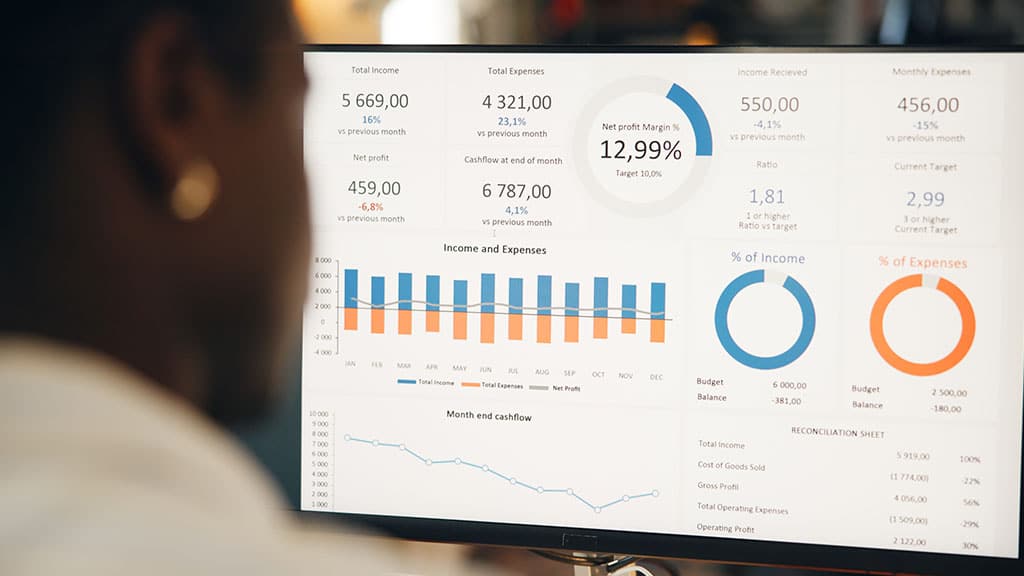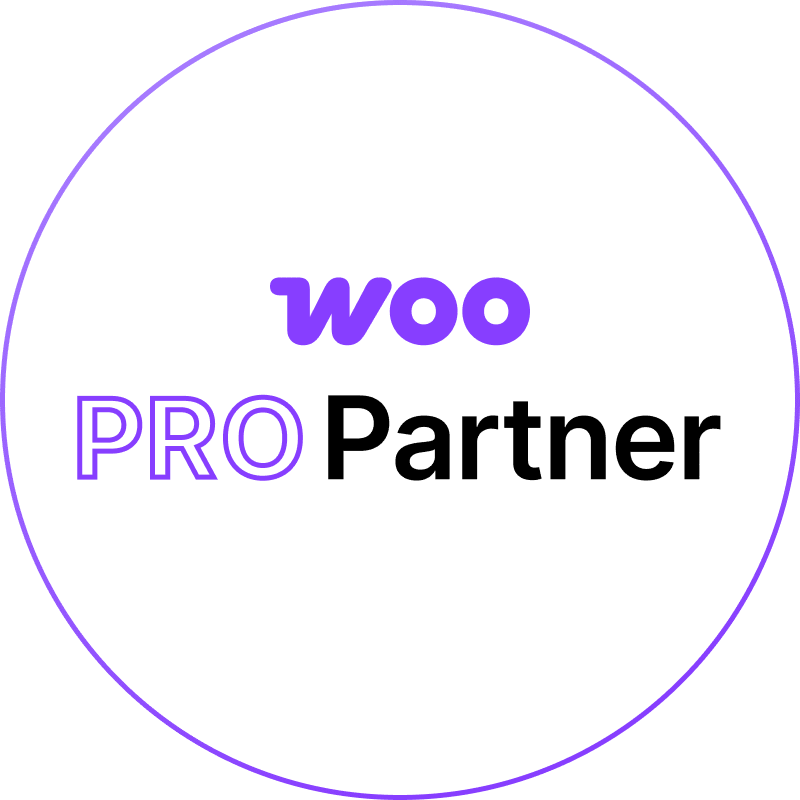Using Google Analytics to Improve Your Small Business PPC Campaigns
Google Analytics is an indispensable tool for any small business running PPC (Pay-Per-Click) campaigns. While platforms like Google Ads offer valuable data on impressions, clicks, and conversions, Google Analytics takes it a step further by providing deeper insights into how users interact with your website after clicking on an ad. By combining PPC data with Google Analytics, small businesses can understand not just which campaigns are driving traffic, but also how effectively that traffic is engaging with their content, converting, and contributing to overall business goals.
For small businesses, maximizing PPC spend is crucial. With a limited marketing budget, it’s important to ensure that every penny spent on ads is driving measurable results. Google Analytics offers the tools needed to optimize PPC campaigns, helping small businesses identify what’s working and what isn’t. By tracking user behavior, conversions, bounce rates, and other metrics, you can make informed decisions about how to refine your PPC campaigns for better ROI. If you’re looking to take your PPC efforts to the next level, using PPC marketing services can help you leverage Google Analytics in the most effective way to improve performance and achieve your business goals.
In this guide, we’ll explore how small businesses can use Google Analytics to improve PPC campaign performance. We’ll cover setting up tracking, understanding key reports, and using data to make informed decisions that optimize your ad spend, drive more targeted traffic, and ultimately boost conversions.
Setting Up Google Analytics for PPC Tracking
Before you can start using Google Analytics to improve your PPC campaigns, it’s essential to set up tracking and integrate it with your Google Ads account. The first step is to link your Google Ads and Google Analytics accounts. This integration allows data to flow seamlessly between the two platforms, enabling you to track and analyze your PPC performance in detail.
Once your accounts are linked, you can set up conversion tracking to monitor the specific actions that matter most to your business, such as purchases, sign-ups, or form submissions. In Google Analytics, this is done by creating “goals” that align with your business objectives. Whether you’re an e-commerce store looking for product purchases or a service-based business tracking lead form submissions, setting up these goals helps you measure your campaign’s effectiveness in driving tangible results.
Another important setup is the use of UTM parameters. These are tracking codes that you append to your PPC URLs to help Google Analytics track the performance of specific campaigns, keywords, or ad groups. By using UTM parameters, you’ll be able to see which specific ads and keywords are driving traffic, as well as how that traffic behaves once it lands on your website. For example, by adding UTM parameters to your ad URLs, you can see how users from specific campaigns, such as “holiday_sale,” are engaging with your content and whether they convert. This detailed tracking ensures that you can effectively monitor the ROI of your PPC campaigns.
With the right tracking setup in place, small businesses can begin using Google Analytics to monitor and optimize PPC campaign performance in real time. The insights gained from this setup will help you make data-driven decisions that ensure your PPC campaigns are both cost-effective and efficient.
Tracking Campaign Performance with Acquisition Reports
Once you’ve set up Google Analytics for PPC tracking, the next step is to use the Acquisition reports to gain a deeper understanding of your campaign performance. The Acquisition section in Google Analytics provides detailed information on how visitors arrive at your site, broken down by source, medium, and campaign. This is where you’ll find data related to your PPC campaigns, allowing you to analyze how well your ads are performing and which campaigns are driving the most valuable traffic.
The Acquisition > Google Ads section is particularly useful for tracking the effectiveness of your PPC campaigns. It shows metrics like impressions, clicks, CTR (click-through rate), CPC (cost-per-click), and conversion data, providing a comprehensive view of your campaign performance. These metrics give you insight into how many people saw your ad, clicked on it, and ultimately completed a desired action on your website, such as making a purchase or filling out a contact form.
In addition to tracking basic performance metrics, Google Analytics allows you to dive deeper into user behavior with metrics like session duration, bounce rate, and pages per session. These indicators show how visitors who clicked on your ads engage with your site. For example, a high bounce rate may suggest that your landing pages are not relevant to the ad copy or that the user experience is lacking, meaning you should consider optimizing your landing pages. On the other hand, a longer session duration and multiple page views indicate that the traffic is engaged and interested in your offerings, which is a positive sign that your PPC campaign is attracting the right audience.
By regularly reviewing these reports, small businesses can identify areas where their PPC campaigns are excelling and areas that need improvement. Whether it’s optimizing your ad copy, adjusting your bidding strategy, or refining your landing pages, the data provided by Google Analytics can help ensure that your PPC campaigns are driving quality traffic and delivering measurable results.
Measuring Conversion Rates and Goals
One of the most important metrics for assessing the effectiveness of your PPC campaigns is conversion rate. Google Analytics allows small businesses to track conversions by setting up “Goals.” A goal in Google Analytics is any action that you want users to take on your website, such as completing a purchase, submitting a contact form, or signing up for a newsletter. These goals can be directly tied to the actions users take after clicking on your PPC ads, providing you with a clear picture of how well your campaigns are performing in terms of driving actual business results.
To set up conversion tracking in Google Analytics, you need to define what constitutes a conversion for your business. For an e-commerce store, this could be the completion of a purchase or the adding of an item to a shopping cart. For a service-based business, a conversion might be a form submission or a phone call request. Once goals are set, you can track how many visitors who clicked on your ads completed these actions. By monitoring conversion rates, you’ll be able to determine which campaigns, keywords, and ads are generating the best results.
A high conversion rate generally indicates that your ads are reaching the right audience, your landing pages are effective, and your website is optimized for conversions. On the other hand, a low conversion rate may suggest issues such as poor ad targeting, irrelevant ad copy, or a poor user experience on your landing pages. Understanding your conversion rates and which parts of your PPC campaigns need improvement will allow you to make data-driven adjustments that maximize your return on investment (ROI).
Analyzing Bounce Rate and Engagement Metrics
Once users land on your website from a PPC ad, it’s important to understand how they engage with your site. Google Analytics provides several engagement metrics, such as bounce rate, average session duration, and pages per session, that help you measure the effectiveness of your landing pages and overall user experience. These metrics provide insight into whether users are finding what they expect when they click on your ad and whether they’re likely to engage further with your content.
Bounce rate is one of the most critical engagement metrics. It represents the percentage of visitors who leave your website after viewing only one page, which suggests that they didn’t find what they were looking for. A high bounce rate indicates that your landing pages may not be matching the intent of your PPC ads, or that the user experience is lacking. For example, if your ad is promoting a “buy one get one free” offer, but the landing page doesn’t clearly feature that offer, visitors are likely to bounce away quickly. To improve bounce rates, small businesses should ensure that their landing pages align with the messaging in the ad and provide a seamless, engaging experience.
Average session duration and pages per session are also important engagement metrics. These metrics measure how long users stay on your site and how many pages they visit during their session. Longer sessions and more pages per visit typically indicate that users are engaged with your content and are more likely to convert. By analyzing these metrics, you can gain insights into which PPC ads are driving quality traffic that explores your website further. If certain ads or keywords result in shorter sessions or fewer page views, it may be a sign that you need to adjust your ad targeting or landing page content.
Using these engagement metrics in combination with conversion data allows small businesses to optimize their landing pages and ad copy for better user experience and higher conversions. A more engaging website will not only lower bounce rates but also increase the chances of turning visitors into paying customers.
Understanding User Behavior with Multi-Channel Funnels
One of the unique features of Google Analytics is Multi-Channel Funnels (MCF), which allows small businesses to track the entire customer journey across multiple touchpoints. Multi-Channel Funnels provide insights into how different marketing channels—such as paid search (PPC), organic search, direct traffic, and social media—work together to drive conversions. By using MCF reports, you can see how PPC ads contribute to conversions, not just as the final touchpoint, but as part of a larger customer journey.
For example, a customer might initially click on a PPC ad while researching a product, but later return to your site through an organic search or a direct visit to complete the purchase. The Multi-Channel Funnels report shows the various touchpoints in the conversion path, allowing you to understand how each marketing channel influences the final conversion. This is especially valuable for small businesses running integrated campaigns across multiple channels. You can see how your PPC ads are working alongside other efforts, and which combination of channels results in the most conversions.
One of the most valuable reports in Multi-Channel Funnels is the Assisted Conversions report. This report highlights the role that PPC ads play in the overall customer journey, even if they aren’t the final click before conversion. It helps small businesses understand how paid ads contribute to conversions over time, even if they aren’t the last touchpoint in the conversion path. By identifying assisted conversions, businesses can better allocate their marketing budget and adjust their PPC strategy to drive more effective results in combination with other marketing channels.
By utilizing Multi-Channel Funnels, small businesses can gain a more comprehensive view of their PPC campaign performance and refine their strategy to ensure that PPC efforts are aligned with overall marketing goals. This approach helps optimize the entire customer journey, ensuring that your ad spend is not only driving immediate results but also contributing to long-term conversions and brand awareness.
Use Google Analytics to Identify High-Performing Keywords
Google Analytics provides invaluable insights into which keywords are driving traffic and conversions from your PPC campaigns. By linking Google Ads to Google Analytics, you can access detailed data on keyword performance beyond basic clicks and impressions. This allows small businesses to evaluate the effectiveness of specific keywords, assess how visitors interact with your site, and determine which keywords are contributing the most to your business goals.
To track keyword performance, start by navigating to the Acquisition > Google Ads > Keywords section in Google Analytics. Here, you can see a breakdown of your keywords and metrics like bounce rate, session duration, and pages per session. These metrics allow you to assess how engaged users are once they land on your site. For instance, if a particular keyword is driving a high volume of traffic but results in a high bounce rate, it may indicate that the landing page isn’t meeting the expectations set by the ad copy. In this case, adjustments to the ad copy or landing page may be necessary to increase relevance and improve conversion rates.
Tracking keyword performance in Google Analytics also helps small businesses optimize their PPC campaigns by identifying high-converting keywords. If a specific keyword is driving valuable traffic—users who spend more time on your site, view multiple pages, and complete desired actions—this keyword is likely worth increasing your budget or optimizing your bids for higher placement. Conversely, if a keyword is attracting low-quality traffic with high bounce rates and low conversion rates, you may want to pause it or refine your targeting.
By continuously analyzing and optimizing high-performing keywords using Google Analytics, small businesses can ensure that their PPC campaigns are targeting the most relevant audience and driving the best results, all while maximizing ad spend efficiency.
Optimizing Landing Pages for PPC Traffic
Once users click on your PPC ads, the landing page they land on plays a crucial role in converting them into customers. Google Analytics provides essential data to help small businesses optimize landing pages for better performance. Using data on bounce rates, session duration, and conversions, you can make informed decisions to refine landing pages and ensure they meet the expectations of PPC traffic.
Start by reviewing the behavior of users who arrive at your site through PPC ads. Pay close attention to the bounce rate for specific landing pages, as a high bounce rate indicates that visitors are leaving your site without engaging with it. If users are bouncing quickly, this may suggest that the landing page content isn’t relevant to the ad, or that the page is difficult to navigate. By examining this data, you can identify which landing pages need adjustments, such as aligning the content with the ad messaging or improving the layout to make it easier for visitors to convert.
Session duration and pages per session metrics are also crucial in assessing how engaged PPC traffic is with your landing page. If users are staying longer on your page and viewing multiple pages, it’s a sign that your landing page is engaging and relevant to their needs. In contrast, if session duration is short and pages per session are low, you may need to revise the page’s content, design, or CTA to better capture users’ attention and encourage them to take action.
Google Analytics also provides valuable data on the effectiveness of specific elements of your landing page, such as forms, buttons, and images. By tracking conversion goals on your landing pages, you can see which elements are leading to successful conversions and which may be causing friction. For instance, if you notice that a particular form field is causing users to drop off, simplifying the form or reducing the number of fields can improve conversion rates.
By using Google Analytics to monitor and optimize your landing pages, small businesses can improve user experience, reduce bounce rates, and ultimately increase conversions from PPC traffic.
Tracking ROI and Cost-Per-Conversion with Ecommerce Tracking
One of the key goals for any PPC campaign is to generate a positive return on investment (ROI). Google Analytics helps small businesses track ROI and measure cost-per-conversion by integrating ecommerce tracking, which allows you to monitor how much revenue your PPC campaigns are generating. This data helps you determine whether your ad spend is paying off or if adjustments are necessary to improve profitability.
Ecommerce tracking in Google Analytics allows you to track transactions and revenue generated from your PPC campaigns. By linking Google Ads and Google Analytics, you can track which PPC campaigns, ad groups, or keywords are leading to actual sales and how much revenue is being generated from each click. This insight is essential for measuring the direct financial impact of your PPC efforts.
In addition to tracking revenue, Google Analytics allows you to measure cost-per-conversion (CPC) and compare it to the revenue generated from your PPC campaigns. If your cost-per-conversion is higher than the revenue generated, you may need to adjust your bidding strategy, targeting, or ad copy to improve profitability. By using ecommerce tracking data, small businesses can identify which campaigns are delivering the highest ROI and allocate more budget to those high-performing campaigns.
By regularly monitoring ROI and cost-per-conversion, small businesses can ensure that their PPC spend is being used efficiently and that they are generating the best possible return from their ad budget. This data also helps businesses make informed decisions about scaling their campaigns, adjusting bids, or pausing underperforming ads to maximize overall profitability.
Continuous Campaign Optimization Using Analytics Insights
Using Google Analytics for continuous campaign optimization is essential for long-term PPC success. The data provided by Google Analytics allows small businesses to make real-time adjustments to their campaigns based on performance metrics. Whether it’s adjusting bids, refining targeting, or optimizing ad copy, the insights from Google Analytics ensure that your campaigns are always aligned with your goals and driving the best possible results.
One key aspect of ongoing optimization is regularly analyzing your keyword performance. As your campaign progresses, you may find that certain keywords are delivering better results than others. By reallocating your budget to focus on high-performing keywords, you can ensure that your ad spend is concentrated on the areas that are driving the most value. Similarly, you can pause or adjust bids for underperforming keywords to avoid wasting your budget on terms that aren’t converting.
In addition to adjusting your keyword strategy, Google Analytics allows you to evaluate the effectiveness of your landing pages and user experience. If you notice that certain pages aren’t converting well, you can use A/B testing to experiment with different versions of your landing page. Testing elements like headlines, CTAs, and images will help you identify which combinations lead to the highest conversion rates, allowing you to optimize your pages for better performance.
Google Analytics also provides valuable insights into audience behavior, which can help refine your targeting strategy. If you notice that certain demographics, locations, or devices are generating better results, you can adjust your targeting settings in Google Ads to focus on those segments. By continuously optimizing your campaigns based on Google Analytics data, small businesses can maximize their ROI, minimize wasted spend, and ensure ongoing success with their PPC advertising efforts.Ready to take your PPC campaigns to the next level? Contact Zen Agency today to discover how our expert PPC management services can help you drive targeted traffic, increase conversions, and maximize your ROI. Let’s turn your digital ads into measurable success!

















